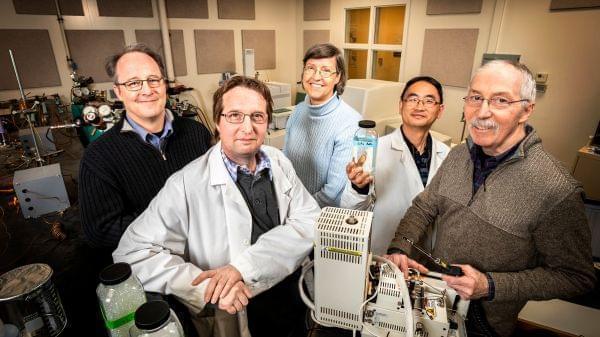New Research Finds Microplastics In Illinois Groundwater

The University of Illinois-led study included researchers from the Prairie Research Institute. Pictured, from left: Walton R. Kelly, John Scott, Nancy Holm, Wei Zheng and lead author Samuel V. Panno. Fred Zwicky/ U of I News Bureau
Microplastics are tiny pieces of broken down plastic, less than 5 millimeters in diameter, that have been found in oceans, rivers, fish and even humans. Now, researchers with the University of Illinois Prairie Research Institute have found a subset of these microplastics in the form of microfibers in Illinois groundwater systems.
“Finding these materials in our groundwater systems is an indication of how widespread this problem with plastic pollution is progressing,” said University of Illinois Geochemist Samuel Panno, who was lead author of the study.
The research, published last month in the journal Groundwater, examined a total of 17 groundwater samples from wells and springs from a limestone aquifer near the St. Louis metropolitan area and from an aquifer in rural northwestern Illinois. All but one of the samples revealed microfibers, which come from synthetic fabrics like polyester and nylon, were present in the groundwater. These materials can get into groundwater from gray water discharge from washing machines, kitchens and sinks.
While researchers have known for years that microplastics are appearing in all sorts of environments, the study from Panno and his co-authors was the first of its kind to find the presence of microfibers in limestone aquifers, which provide water for about a quarter of the U.S. population.
“It’s a large number of people,” Panno said. “And it’s pretty much the same world-wide.”
Panno cautions that there’s still a lot of unknowns when it comes to the health impacts of microplastics on humans and at what concentrations they can be harmful when they make their way up the food chain or into the water supply.
In the study from the Prairie Research Institute, the presence of microfibers appeared to be associated with pharmaceuticals and other chemicals in the groundwater samples they tested.
“The real problem may or may not be with the fibers, but with the fibers ability to absorb things like pharmaceuticals that are in groundwater,” Panno said.
Panno said he hopes the findings serve as a “wake-up call” that more actions should be taken with regard to the disposal and recycling of materials that break down into microplastics.
